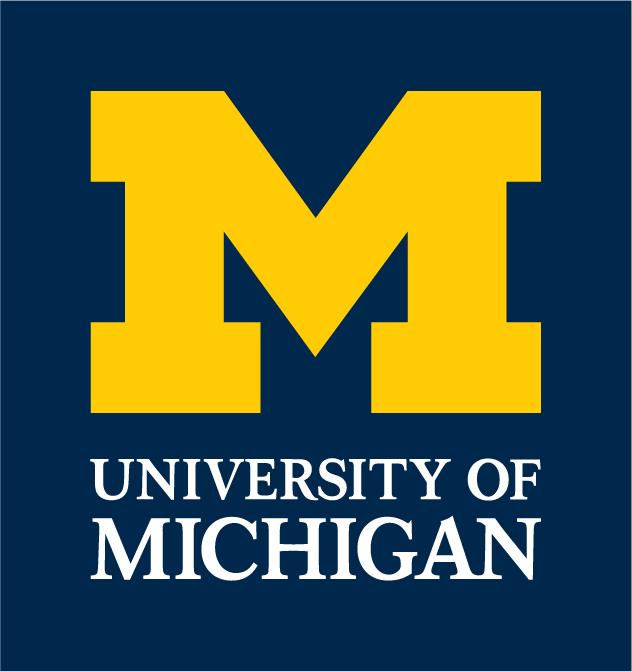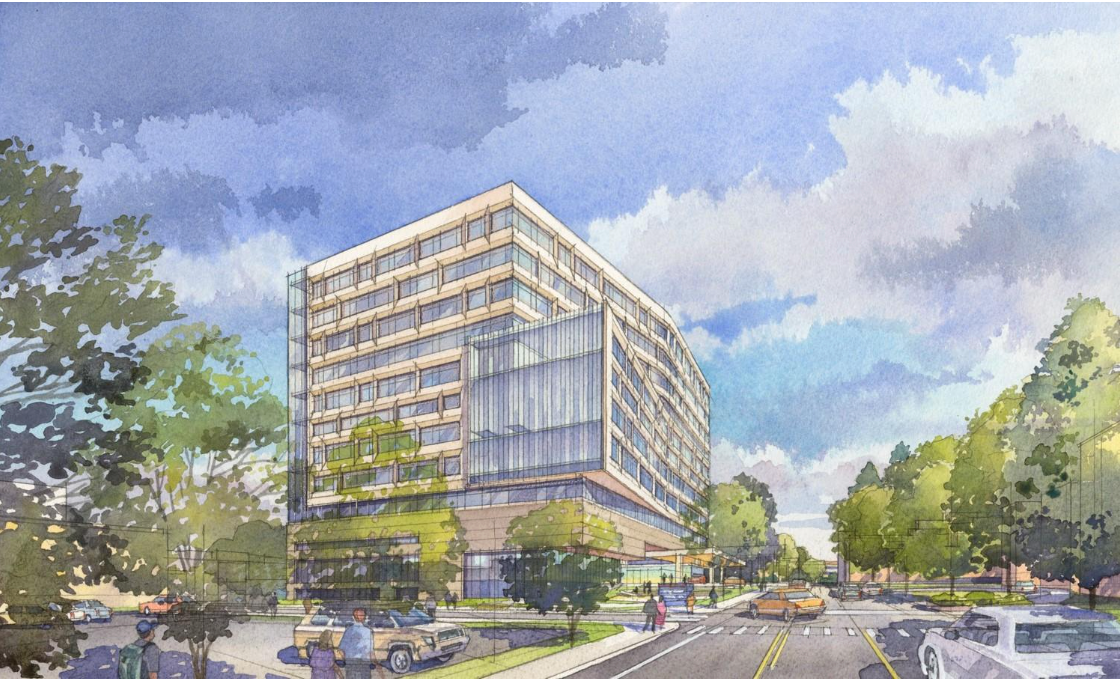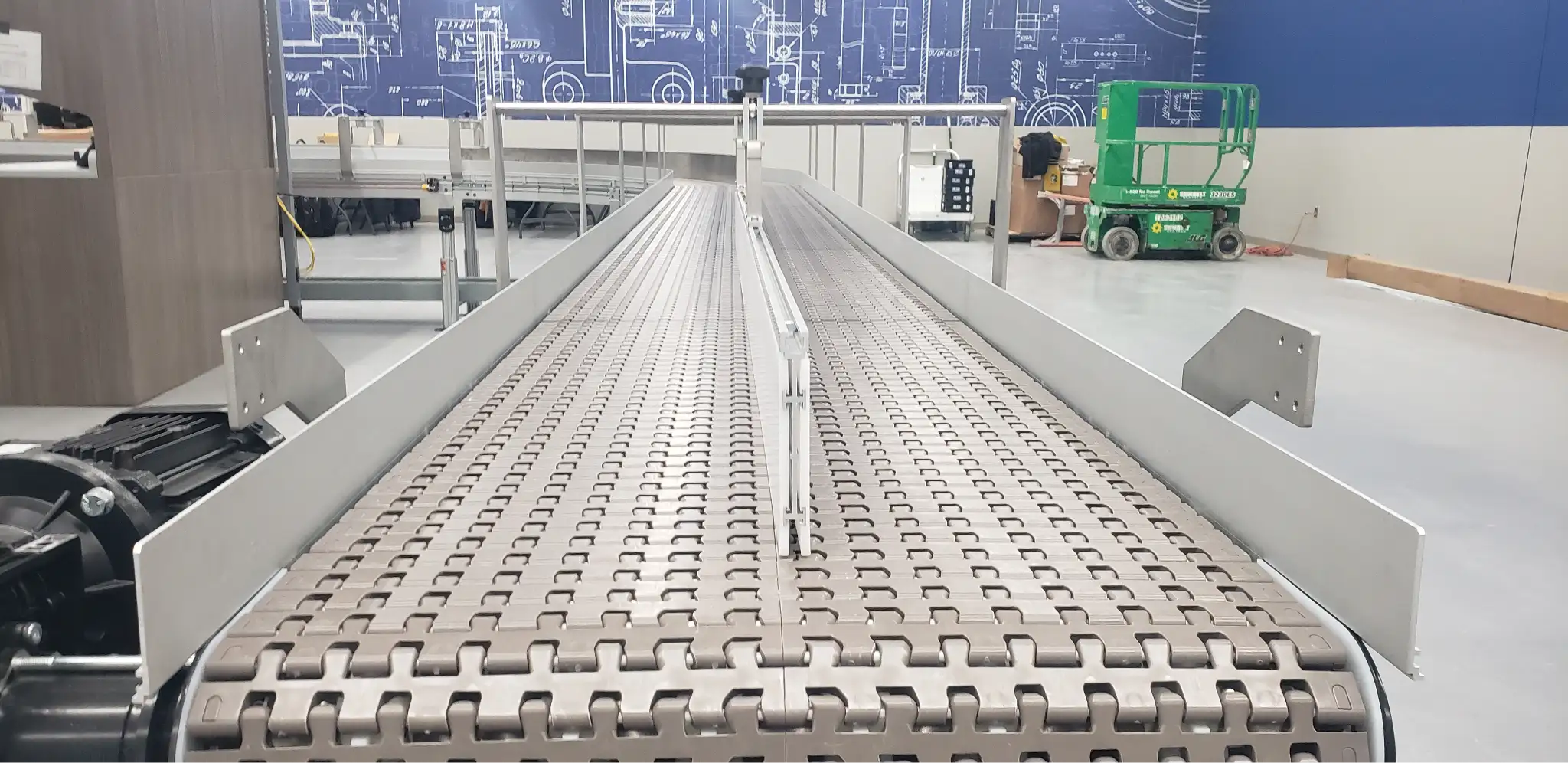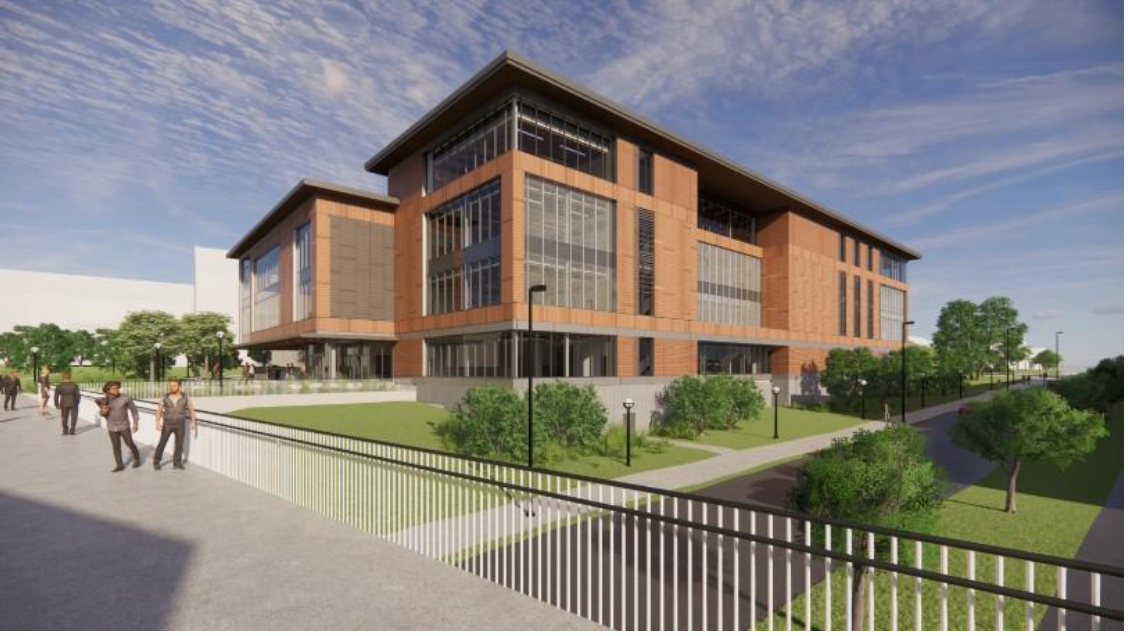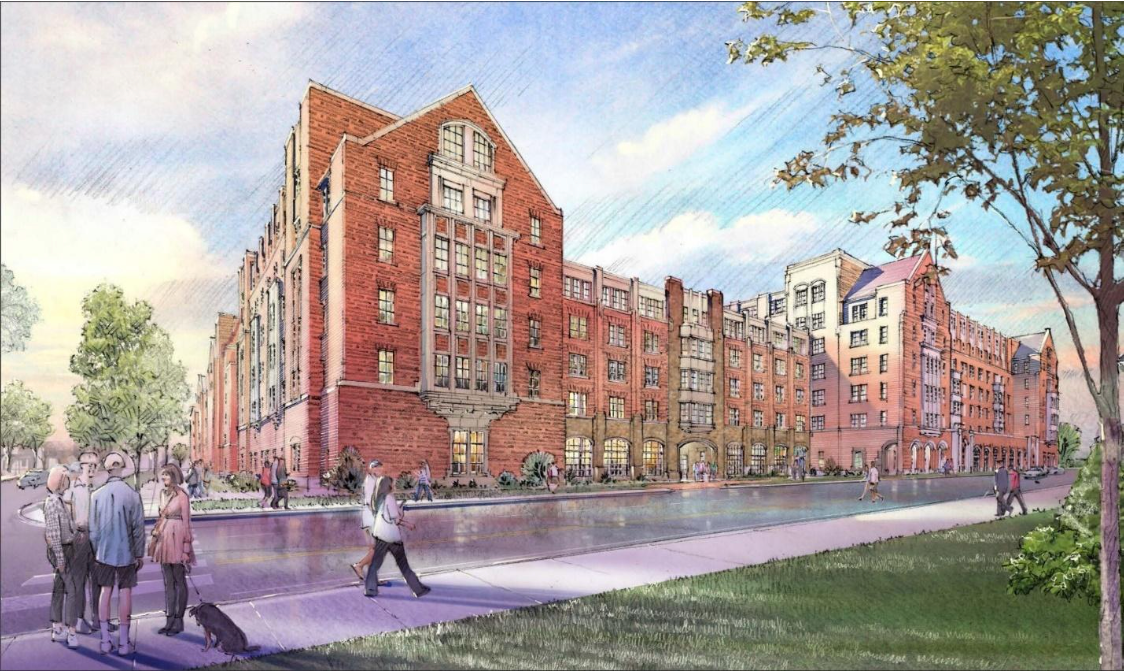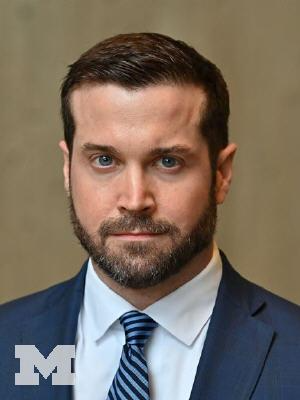About
Learn about the University of Michigan, including Featured News, Featured Projects, and the Team.
Talk to us
Have questions? Reach out to us directly.
Learn about the University of Michigan, including Featured News, Featured Projects, and the Team.
About the University of Michigan
- Enrollment Fall 2024
- 67,488
- General Revenue Debt Outstanding as of 6/30/24
- $4.9 Billion
- FY 2025 Enterprise Total Operating Revenue Base Budget
- $14.9 Billion
The University of Michigan is a comprehensive public institution of higher learning with over 65,000 students and 50,000+ employees on three campuses (Ann Arbor, Dearborn, and Flint). U-M’s ongoing success is evidenced by our recurrent recognition in U.S. News & World Report as one of the top values in higher education nationally and as one of the top three public universities for undergraduates. U-M also has a nationally renowned health system which includes a wide array of hospitals, joint ventures, health centers, and outpatient clinics that provide world-class medical services statewide.
U-M was originally chartered in 1817. The main campus is located in Ann Arbor, 43 miles west of Detroit, and major campuses are also maintained in the cities of Dearborn and Flint, Michigan. Undergraduate programs in nearly 500 fields of study are offered by these three campuses. U-M is governed by the Regents of the University of Michigan, consisting of eight members elected at large in the biennial state-wide elections and the President of U-M, who serves as an ex officio member.
In FY 2023, President Santa J. Ono joined U-M and a number of significant initiatives began, including Vision 2034, a collective strategic visioning process to imagine our shared future for the next 10 years, which engaged U-M students, employees, alumni and partners. Campus Plan 2050 was also launched and provides an extraordinary opportunity for the U-M community to help craft a blueprint for the university’s Ann Arbor campus, with a special focus on creating the living, learning and working environments that support our strategic vision. There has also been significant progress on our sustainability efforts, including installing renewable energy infrastructure, constructing green buildings and prioritizing clean transportation. Campus improvement projects financed by our “green bonds” are addressing climate transition risks by mitigating greenhouse gas emissions from buildings and the transportation sector.
Because of its financial strength, U-M remains well positioned for the future. As of June 30, 2024, U-M is one of only seven public universities in the country to earn the highest possible credit ratings from S&P Global (AAA) and Moody’s (Aaa). We’ve maintained these outstanding ratings for years, which is a clear indication of our long-term financial strength and stability.
Image Gallery
News
News
November 21, 2025
The University of Michigan has consistently ranked as the nation’s top public university for study abroad, reflecting its commitment to international education and historic growth in student participation, according to newly released data.
Recognized during International Education Week 2025, U-M was named the No. 1 public university—and No. 2 overall—in the latest Open Doors report by the Institute of International Education, based on participation during the 2023-24 academic year.
“Maintaining our position as the No. 1 public university for education abroad for the second consecutive year—and ranking No. 2 nationally—reflects the university’s deep commitment to preparing students for a global future,” said Valeria Bertacco, U-M vice provost for engaged learning. “Whether through study abroad, international internships, research collaborations or service programs, we continue to expand pathways for students to engage meaningfully with the world.”
Business in Milan
For Peter Parlagreco, a senior majoring in business, the study abroad experience offered an inside look at the heart of the global luxury industry.
“I traveled to Milan, Italy; an immersive academic experience centered on luxury, culture and brand management. We explored the city’s major cultural and historical sites, visited luxury fashion houses, toured production facilities, engaged with industry speakers and studied how the Italian lifestyle and country-of-origin effects shape global perceptions of craftsmanship and luxury. The trip blended academic learning with firsthand exposure to brands like Armani, Dolce & Gabbana, Maserati and Bottega Veneta.”
Parlagreco joined the Milan program through an application process designed to provide students with high-impact experiential learning. With a deep interest in international business, he was eager to connect classroom theory with hands-on exposure to global markets.
“From the moment I landed, Italy immediately expressed its identity through design, beauty and luxury; from advertisements at the airport to the architecture, boutiques and streets of Milan,” Parlagreco said.
The trip also sparked a personal reflection for Parlagreco, providing insight into how luxury connects deeply to individual psychology and global culture.
“Coming from a lower-income background, I was always curious about why people desire luxury. After seeing the industry up close, I realized how deeply luxury is tied to human psychology: status, identity and aspiration. I also learned how much of luxury pricing is driven not by materials but by intangible elements: brand history, storytelling, global cultural awareness and craftsmanship narratives.
“The trip also showed me how global culture shapes design and how Italian identity has been built through centuries of absorbing influences from around the world. It broadened my understanding of globalization and the responsibilities companies have when localizing their brands internationally,” Parlagreco said.
Participation and impact
According to the most recent Open Doors report by the Institute of International Education, 3,966 U.S. students from U-M participated in education-abroad programs during the 2023–24 academic year. Students traveled to 121 countries, with Spain, the United Kingdom and Italy among the top destinations.
The Open Doors survey, funded by the U.S. State Department, is the nation’s most comprehensive measure of study abroad, but does not include all U-M students. Non-U.S. citizens and those participating in noncredit educational activities such as internships and volunteer work are excluded.
When including these groups, U-M’s total rises to 5,462 students abroad in 2023–24—an increase of 1,496 over the Open Doors count. These students participated in 5,827 trips, with many engaging in multiple experiences.
Nearly 19% of these students were from underrepresented racial minority backgrounds and 12% were first-generation college students.
One canvas at a time
As a first-generation college student and art major, Maria Isho had never traveled overseas before her summer in South Korea.
“The biggest reason I wanted to travel abroad was because I had never been abroad before and I wanted to experience a different culture and setting than what I am used to,” Isho said.
Because her class schedule ran from 8 a.m. to 3 p.m., she had to use the rest of her days wisely and “often crammed as much as I could, so moments like sitting alone by the river were the best way to sit and take in everything you’ve done,” she said.
Locals made her feel welcome and appreciated; “I did not know much about any Korean prior to the trip, but I did my best to learn before going places and it led to many pleasant interactions,” Isho said.
She had access to art materials and worked with “genuinely brilliant professors who taught me about traditional Korean craft. The skills I learned from them I plan to carry into my work and explore further,” she said.
Grateful for support from U-M’s First-Gen Education Abroad Scholarship, Isho encourages future students.
“Try to learn the language when you can; it is respectful and people will appreciate your effort. Don’t spend all your time in your dorms! There is so much more to do than just attend your classes. Try to explore as much of the culture as you can and make the most of your trip there.”
Finding community in Morocco
Mahmuda Chowdhury from the Ford School of Public Policy saw studying abroad as the chance for a fresh start. “I can read Arabic, but not understand it or speak it so I thought studying abroad would be a good opportunity,” Chowdhury said.
“During my study abroad in Morocco, I met many other first-generation students in my cohort and Moroccan peers. Our discussions flowed naturally because we could easily relate to each other’s experiences, from navigating unfamiliar academic and cultural settings to balancing the expectations of our families. This shared understanding created a strong sense of community and made the experience even more meaningful.”
Chowdhury hadn’t always planned to go to Morocco. “I had intended to go to South Korea, but a friend convinced me to join her for the Morocco program. When she canceled, I decided to go on my own, despite feeling anxious about going to a country where I didn’t speak the language,” she said.
What began as an uncertain journey turned into one of the best experiences of her life. She made new friends, embraced the language and found the program at U-M “so well thought out; everything they do is intentional and considerate of their students and I would recommend it 1,000 times over,” Chowdhury said.
One core memory was an overnight trip to see the Moroccan national football team play Zambia—a journey that summed up the excitement and camaraderie she found abroad. “It was an incredible adventure,” she said.
Chowdhury’s host family and friendships made leaving Morocco difficult, but she treasures the unforgettable experiences, personal growth and lifelong connections she gained. Financial support from the First-Gen Education Abroad Scholarship, she added, made it all possible by allowing her to “fully immerse myself in the experience without constantly worrying about money,” Chowdhury said.
“We look forward to continuing to build on this momentum, amplified by our Global Engagement Strategic Plan,” Bertacco said. “In the first two years of the plan, we have broadened and deepened our global footprint—launching key initiatives that increase and diversify student participation in international experiences. These efforts reflect our unwavering dedication to global engagement across every corner of the university.”
News
November 13, 2025
Delivering his State of the University address, President Domenico Grasso celebrated significant organizational victories while underscoring a priority of his presidency: As leaders, the University of Michigan must continue to innovate, invest and educate.
RELATED STORY
In front of 200 leaders and invited guests in University Hall — and more than 1,000 Michigan community members watching via a livestream — Grasso acknowledged numerous highlights from 2025 and unveiled several ambitious projects intended to strengthen U-M’s responsibility to serve the public good through research and dialogue.
Grasso focused the address through the lens of U-M’s strategic visioning plan, Look to Michigan, which launched this summer from the foundation of Vision 2034. Following Grasso, teams of faculty, staff and students presented on each of the vision’s five main pillars.
“Our university’s progress is impressive, and our ambitions bold,” he said. “Our legacy of impact and service is not defined by individuals but by the long and devoted line of staff, students and faculty who advance humanity through their intellect, passion and skills.”
Grasso touched on several milestones as evidence of the university’s health:
- Record applications of nearly 116,000 students hoping to become Wolverines this fall.
- Surpassing $2 billion in research expenditures.
- Reaching $4.2 billion toward U-M’s $7 billion comprehensive campaign goal.
He referenced generational facilities coming online, including the state-of-the-art D. Dan and Betty Kahn Health Care Pavilion, the Central Campus Residential Development, the new College of Pharmacy building and the Hadley Family Recreation & Well-Being Center.
Grasso then introduced a major new investment in biomedical research, announced updates to the civil discourse and dialogue center and reaffirmed the university’s support of ambitious Look to Michigan programs.
Biomedical advancements
A $250 million investment will develop a Michigan-based “Skunk Works” for biomedical research. The biomedical innovation institute will make U-M a global leader in life science innovation by launching companies to accelerate research breakthroughs.
“We are establishing a biomedical innovation institute that will be one of the most ambitious investments in years,” Grasso said. “We will merge our research strengths with entrepreneurial speed to bring discoveries from the laboratory to patients faster than ever before.”
The high-risk, high-reward institute is grounded in bio-AI, clinical trials and commercialization. The result will be serving humanity more effectively with faster and more advanced healthcare.
Grasso cited the recent success of HistoSonics as an example. Twenty years ago, U-M researchers pioneered a non-invasive method to destroy liver cancer tumors using ultrasound pulses. Their technology — histotripsy — grew into the company HistoSonics. Two years ago, it received FDA approval to treat liver tumors and this summer, it sold for $2.25 billion. HistoSonics now plans to apply its technology to other cancers.
“This is a powerful example of how Michigan is saving lives. We aim to replicate this success, but at a significantly faster pace,” he said.
The five-year, $250 million investment will launch the institute and recruit top scientists and entrepreneurial talent from across campus and throughout the world.
Dialogue center next steps
Grasso provided more information on the $50 million civil discourse and dialogue center, first announced in September, to bridge today’s societal differences and strengthen our social fabric.
“Some may find it ironic that a university, already the marketplace of ideas, would establish such a center,” Grasso said. “But at this moment in history, when division too often drowns out discourse, Michigan must lead.”
The university will begin campus town halls in January and February, leading to an April preview event that will showcase what true dialogue can achieve. Grasso said the discourse center will reach out to the broader society and model how to listen, communicate and connect across our differences in a thoughtful manner.
“We may not always succeed. But we will always strive for mutual respect, humility and a commitment to consequential outcomes,” he said.
Looking to Michigan
Grasso concluded by reaffirming U-M’s commitment of $1 billion over 10 years to Look to Michigan initiatives.
“I have been a department chair, a dean and a provost, and some may wonder how we can make this vast investment while also addressing budget challenges,” Grasso said. “The answer is we must think differently. We must not compromise the potential of the future for the exigency of the present.”
Grasso said the university will soon call for proposals from the university community for ideas.
“The world’s brightest minds in the world surround us on all three campuses, and together we can be more strategic and disciplined than ever before,” he said.
News
October 7, 2025
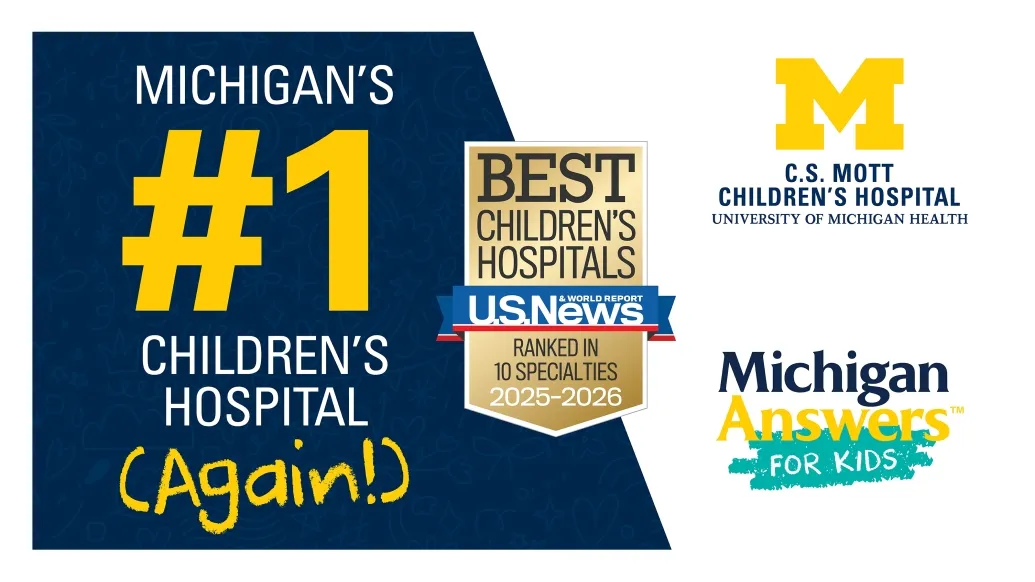
ANN ARBOR, Mich. – University of Michigan Health C.S. Mott Children’s Hospital has once again earned national recognition in the 2025–2026 U.S. News & World Report Best Children’s Hospitals rankings and been named the No. 1 children’s hospital in Michigan.
C.S. Mott Children’s Hospital – part of Michigan Medicine, U-M’s academic medical center – was recognized for top performing care in cancer, cardiology and heart surgery, diabetes and endocrinology, gastroenterology and GI surgery, neonatology, nephrology, orthopedics, pulmonology and lung surgery, urology and pediatric and adolescent behavioral health.
"This achievement reflects the dedication of our extraordinary doctors, nurses, and team members who put children and families at the center of all we do," said Luanne Thomas Ewald, M.H.A., FACHE, chief operating officer of U-M Health C.S. Mott Children’s Hospital and Von Voigtlander Women’s Hospital.
"We’re honored to serve as a destination for families seeking world class care for the most complex, rare and life-threatening pediatric conditions.”
Rankings are based on a combination of clinical data, patient outcomes and a national survey of thousands of pediatric specialists. This marks the 19th year Mott has been the top ranked children’s hospital in Michigan.
"We’re incredibly proud of our talented teams whose commitment to clinical excellence continues to earn the trust of families from across the state and beyond,” said Kimberly Monroe, M.D., M.S., chief clinical officer at C.S. Mott Children’s Hospital.
Mott is among 85 children’s hospitals ranked by U.S. News out of 118 evaluated nationwide.
“This recognition reflects the depth of expertise across our medical teams and the strength of our research and innovation in delivering new solutions for some of the most challenging pediatric conditions," said Donna Martin, M.D., Ph.D., chair of the Department of Pediatrics at Michigan Medicine and physician-in-chief for C.S. Mott Children’s Hospital.
"We’re advancing care across specialties because every child deserves access to the best possible outcomes.”
Learn more about why C.S. Mott Children’s Hospital is ranked among the nation’s best: www.mottchildren.org/usnews
About C.S. Mott Children’s Hospital: As a not-for-profit organization, University of Michigan Health C.S. Mott Children’s Hospital is one of the leading pediatric health care centers in the United States, providing comprehensive, specialized health care for children since 1903. Its mission is to integrate clinical care, education, research and advocacy to advance the health status of children, their families and communities in the state, region and beyond.
Ranked Michigan’s No.1 children’s hospital for 19 years in a row by U.S. News and World Report, Mott offers nationally-ranked, specialty care in a 1.1 million square foot, 348-bed facility in Ann Arbor, Mich. The hospital is also home to Von Voigtlander Women’s Hospital, a dedicated pediatric emergency department, an on-site Ronald McDonald House and specialty services not offered anywhere else in Michigan for newborns, children and pregnant people.
Featured Projects
View All Featured Projects
Team
Talk to us
Have questions? Reach out to us directly.
